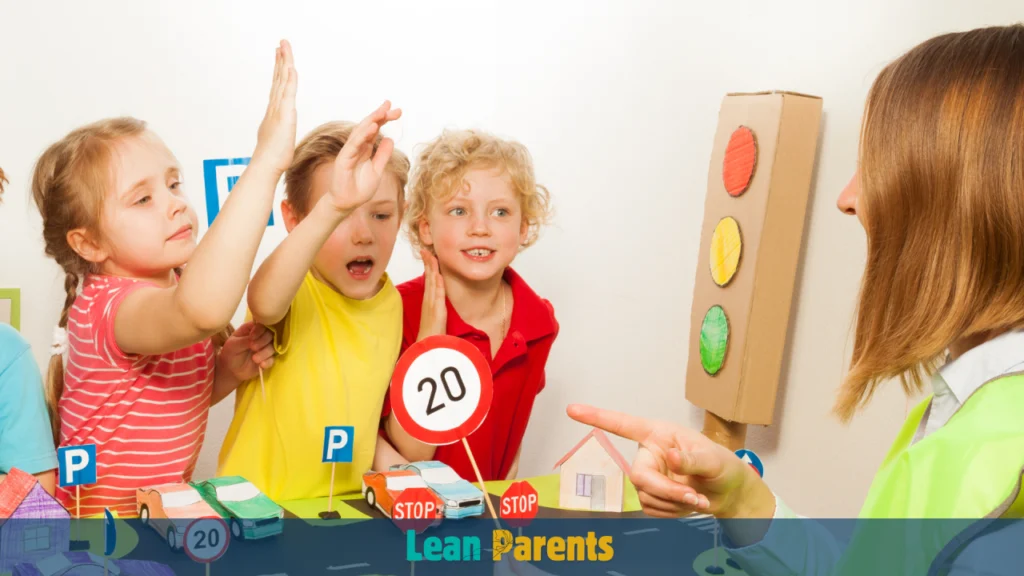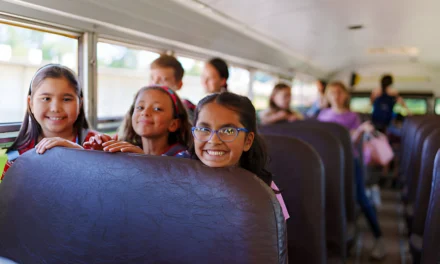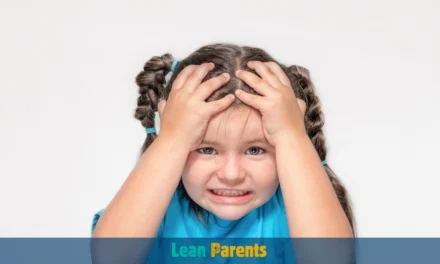Emotional self-regulation is key for kids to grow up well. It helps them deal with stress, build strength, and handle tough feelings. Educational psychologist Michele Borba says teaching kids to be empathetic is vital today. This is because of bullying and mental health issues among youth1.
Teaching kids to control their emotions is good for school and future friendships. It’s about knowing themselves, managing feelings, and solving problems. Empathy makes people connect better with others, leading to more help and involvement1. Parents are key in teaching these skills, shaping their kids’ emotional smarts and toughness.
Key Takeaways
- Emotional self-regulation is a critical skill for child development, helping them manage stress, build resilience, and handle difficult emotions.
- Developing self-regulation skills, such as self-awareness and emotional literacy, enables children to control their thoughts, actions, and emotions.
- Empathy, a key component of emotional intelligence, helps children connect with others and develop essential life skills.
- Parents play a vital role in teaching emotional self-regulation through modeling appropriate behaviors, understanding children’s stress triggers, and providing a supportive environment.
- Emotional self-regulation is foundational for children’s academic success and future relationship building.
Understanding Emotional Self-Regulation: Foundation for Child Development
Emotional self-regulation is key for kids to grow up well. It helps them control their feelings and actions. This skill is important for their happiness, school success, and making friends23.
Defining Emotional Intelligence in Children
Emotional intelligence in kids means they can understand and solve their feelings. They learn to know their emotions, figure out why they feel that way, and find good ways to handle them2.
The Science Behind Self-Regulation
The brain’s frontal lobe is where self-regulation starts. It helps kids control their impulses, stay focused, and make smart choices3.
Key Components of Emotional Control
Emotional control includes knowing and understanding feelings. As kids grow, they get better at recognizing and managing their emotions. They learn to feel for others and use strategies to control their feelings23.
Helping kids develop emotional intelligence and self-regulation skills is crucial. It helps them do well in many areas of life23.
| Emotional Self-Regulation Milestones | Early Infancy | Toddlerhood | Preschool |
|---|---|---|---|
| Key Behaviors | |||
| Caregiver Role |
Understanding emotional intelligence and self-regulation is key for kids’ success. It helps them handle their feelings, control impulses, and grow strong. This sets them up for a happy and fulfilling life23.
“Emotional intelligence and self-regulation are the building blocks of childhood success, empowering children to navigate their feelings, manage their impulses, and develop the resilience needed for a fulfilling life.”
The Difference Between Self-Regulation and Emotional Control

Self-regulation and emotional control are closely related but different. Self-regulation is about managing energy and basic feelings. It’s the base for more complex emotional control. Emotional control means understanding and solving feelings, knowing where they come from and how to respond4.
Self-regulation is key because it helps kids manage their energy and basic feelings. This is the start of learning to handle deeper feelings. Kids learn to understand and control their emotions better45.
Being good at self-regulation and emotional control is important for kids. Self-regulation helps with controlling impulses and staying focused. Emotional control is about understanding and dealing with complex emotions46.
| Self-Regulation | Emotional Control |
|---|---|
| Managing energy levels and basic emotions | Identifying, understanding, and regulating deeper feelings |
| Foundational skill for emotional development | Builds upon self-regulation abilities |
| Helps with impulse control and focus | Enables more nuanced emotional awareness and problem-solving |
It’s important for kids to develop both self-regulation and emotional control. These skills help them deal with emotions better. They become more aware, resilient, and socially smart456.
The Brain Science of Emotional Self-Regulation in Children
The child’s brain grows a lot, especially in areas for emotional processing. It’s key to know how the brain handles emotions. The fight-or-flight response can take over a child’s brain, making it hard to think clearly7. The brain’s growth is crucial for controlling emotions. The frontal lobe, key for emotions, might stop working when emotions are high. This shows why calming techniques are important to get this area working again.
Fight-or-Flight Response in Kids
When a child feels threatened, their brain goes into fight-or-flight mode. This prepares the body to face or run from danger. The amygdala, the emotional center, gets very active, while the thinking part of the brain might pause8. This can cause kids to act impulsively and emotionally, making it hard to control their feelings.
How the Child’s Brain Processes Emotions
The brain handles emotions in a complex way. The amygdala spots and reacts to emotional signals, while the prefrontal cortex tries to control these reactions8. As kids grow, they learn to use the prefrontal cortex to manage the amygdala’s emotional responses. This skill, called emotional self-regulation, takes until about 24 to fully develop8.
Neural Development and Emotional Control
Being able to control emotions is linked to brain development. Neural development is key for kids to manage their emotions. As the brain grows, kids get better at handling their feelings9. This growth is slow, but big improvements in emotional control are seen between 2 and 5 years old9.
It’s vital to understand the brain science behind emotional self-regulation in kids. Knowing how the fight-or-flight response, emotional processing, and brain growth affect kids helps parents and caregivers. They can then use the right strategies to help kids develop this important skill.
Primary vs Secondary Emotions in Child Development
Children grow up feeling many emotions. They start with basic primary emotions from birth. Then, they learn more complex secondary emotions through life experiences and social settings. Knowing the difference between primary and secondary emotions is key to helping kids develop emotional intelligence.
Newborns and babies show eight primary emotions early on. These emotions are hardwired and likely helped our ancestors survive. These include anger, sadness, fear, joy, disgust, surprise, interest, and contempt. Babies as young as six months can feel jealousy, showing emotions start early10.
Secondary emotions like anxiety or shame come later, between one and two years old. They are not born with these emotions but learn them from experiences and culture10. Teenagers feel strong emotions due to hormonal changes. It’s important for parents to guide them during this time10.
Teaching kids to recognize and name their emotions is vital. By validating their feelings, parents help kids understand and manage their emotions. This skill is crucial for their emotional well-being.
Experts say there are six to eight primary emotions, like happiness and sadness11. These emotions tell us about our needs and goals. They help us adapt to our environment11.
Secondary emotions, like anxiety, can hide the true feelings. They can lead to negative thinking and outcomes11. It’s important to know the difference to handle emotions better.
Understanding primary and secondary emotions helps parents support their kids. This knowledge lets kids express their feelings and build strong relationships101112.
Early Signs of Emotional Development in Infants and Toddlers
Watching infants and toddlers grow emotionally is truly amazing. They start showing emotions early, from the first smiles to the first tantrums These moments are key to understanding their emotional world13.
Infant Emotional Milestones
Infants show a wide range of emotions from birth. They cry, coo, and even calm down when comforted. By 2 months, they start to smile and look at faces13.
By 9 months, they can express happiness, sadness, and even surprise. They may get upset when left alone or show fear of strangers13.
Toddler Emotional Development Stages
As they grow, toddlers start to explore and express themselves more. Around 18 months, they begin to play alone but still want a parent nearby. They point and show interest in things13.
By 24 months, they start to imitate others and may even show defiance. They notice when others are upset and begin to show more independence13.
By 30 months, toddlers can play with others and follow simple routines on their own. They even start to dress themselves13.
These milestones show how fast infants and toddlers develop emotionally. They lay the groundwork for emotional intelligence and self-control later in life131415.
.
| Age | Emotional Milestones |
|---|---|
| 2 months | Calm down when spoken to or picked up, look at faces, smile at people when they talk or smile, cry when hungry, wet, tired, or want to be held |
| 9 months | Show several facial expressions like happy, sad, angry, or surprised, react when caregivers leave, smile or laugh during play, may be shy, clingy, or fearful of strangers |
| 18 months | Explore alone with a parent close by, point to show something of interest, put out hands for washing, look at a few pages in a book, help dress themselves |
| 24 months | Imitate adults and other children, display defiant behavior, notice when others are upset, look at faces to see reactions in new situations, show more independence |
| 30 months | Play next to other children or with them, follow simple routines independently when told, dress themselves in loose clothing |
Understanding these early signs helps parents and caregivers support their children’s emotional growth. It’s key to their well-being and development131415.
.
The Role of Parents in Teaching Self-Regulation

Parents are key in teaching their kids to manage their feelings. They show their kids how to handle emotions and impulses16. By creating a safe space, accepting feelings, and teaching coping skills, parents help their kids grow emotionally intelligent16.
Good parenting helps kids learn to deal with their emotions16. When parents listen and understand their child’s feelings, kids learn to control their emotions better17. But, if parents struggle with their own emotions, it can hurt their child’s ability to manage feelings17.
Parents have a big impact on their child’s emotional growth16. By being supportive, validating feelings, and teaching coping skills, parents help their kids become emotionally strong16. This helps kids succeed in life and feel good about themselves18.
| Parental Strategies for Fostering Emotional Self-Regulation |
|---|
|
By being emotional guides, parents help their kids develop important life skills16. Teaching self-regulation early on helps kids become emotionally strong and flexible18.
“The most important thing that parents can teach their children is how to regulate their emotional responses.”
– Dr. John Gottman, Renowned Relationship Researcher
Practical Strategies for Building Emotional Control Skills
Teaching kids to control their emotions is key for their growth and happiness. Some people feel calm one minute and then feel sad or angry the next19. Learning to manage emotions can improve both mental and physical health19.
Emotional self-regulation can get better with time. People with high emotional intelligence know how to handle tough feelings19.
Age-Appropriate Calming Techniques
Older kids can use deep breathing, counting, and visualization to calm down19. Younger ones might find it helpful to swing or jump, which can also help with their feelings19.
Sensory Activities for Emotional Balance
Activities like using a lycra swing or rhythmic movements can calm the nervous system19. These activities help kids learn to calm themselves down and manage their feelings on their own.
On Facebook, many people talked about how to help kids control their emotions20. The conversation shared over 15 ways to improve self-regulation skills in kids and young adults. Ideas included using books, visual aids, and scripts20.
Teachers were advised to use movement breaks, mindfulness, and create special routines for students20. Role-playing and setting up a calm area in the classroom were also suggested20.
It’s important to teach kids about emotional control for their mental health and relationships21. Studies show that mindfulness can help with emotional regulation. Sometimes, therapy is needed to deal with deeper issues21.
Factors like sleep, diet, exercise, and social support also help kids develop emotional control skills21.
By using these strategies, parents and teachers can help kids develop the emotional control they need to succeed192021.
Common Challenges in Emotional Development
Childhood is a complex emotional journey for kids and parents. One big challenge is identifying and expressing emotions. Some kids find it hard to name their feelings, leading to frustration and outbursts22.
Emotional outbursts are common and can show emotional regulation issues. These intense reactions can affect a child’s social life and school work22. It’s also hard for kids to adjust to new situations or changes23.
Anxiety is a big issue in kids too. They might worry, fear, or panic in different situations. This can make it harder for them to manage their emotions22. It’s important to help kids deal with these feelings to improve their well-being and growth.
It’s key to spot these challenges early to help kids. Doctors and teachers can offer support. Parents can work with them to create a caring space for emotional growth22. With patience and the right help, kids can learn to handle their emotions and succeed in life23.
Helping kids with emotional challenges can lead to better relationships, school success, and overall health22. By understanding these issues and getting the right help, parents and caregivers can teach kids to be emotionally strong and self-controlled23.
Creating a Supportive Environment for Emotional Growth
Helping children grow emotionally means creating a safe space for them to share their feelings. This means setting up safe areas for them to express themselves. It also involves building trust through open talks.
Setting Up Safe Spaces for Emotional Expression
Having a special spot in the home, like a quiet corner, helps kids feel safe to explore their feelings24. This “emotional safe space” lets them share their feelings without fear of being judged. It’s key for their emotional health.
Building Trust and Communication
Parents and caregivers need to respond with empathy and consistency to build trust and encourage talking about feelings25. Regular talks and validating a child’s emotions help create a supportive environment. This environment helps kids grow emotionally and learn to manage their feelings.
By focusing on emotional safety, supportive parenting, and open communication, parents can greatly help kids develop emotional self-regulation skills.
“Emotional intelligence is the ability to identify and manage one’s own emotions, as well as the emotions of others.”
The Impact of Emotional Self-Regulation on Future Success
Teaching children to control their emotions is key to their success and happiness. Studies show that emotional control leads to better grades, healthier friendships, and better mental health26. Kids who manage their feelings well can deal with stress, solve problems, and get along with others26.
Emotional smarts are crucial for success27. In fact, emotional control might be more important than being smart. This is because it helps kids make good choices and control their impulses27.
The COVID-19 pandemic has shown us how important emotional control is for everyone27. By teaching kids how to handle their feelings, we prepare them for life’s ups and downs. This way, they can succeed in their relationships and future goals27.
| Key Skills for Emotional Self-Regulation | Benefits of Mastering Emotional Intelligence |
|---|---|
|
|
Investing in emotional control in kids is a smart move for their future. By teaching these skills, we help them face life’s challenges with confidence and emotional smarts2627.
“Emotional self-regulation is the foundation for a child’s future success in life, relationships, and personal well-being.”
When to Seek Professional Help for Emotional Regulation Issues
As a parent, watching your child’s emotional health is key. If your child often struggles with managing their feelings, it might be time to get help. You can look into professional intervention28.
Signs your child might need help include lots of emotional outbursts, trouble calming down after being upset, or clear signs of anxiety or depression28. Getting help early can stop big problems later28. Experts can give your family the tools and support you need.
- Early childhood trauma is the most critical time for emotional issues28.
- Child neglect can cause emotional problems by not meeting basic needs28.
- Traumatic brain injury can lead to emotional issues through brain damage28.
- Not feeling understood can cause emotional problems28.
- PTSD is marked by severe emotional issues28.
- People with Borderline Personality Disorder often struggle with emotions28.
Getting therapy for children early can help them learn to handle their feelings better28. Don’t wait to get help – it could greatly improve your child’s emotional health and future.
Remember, professional intervention is helpful at any age. The sooner you tackle emotional challenges, the better the results28. With the right help, your child can manage their emotions in a healthy way.
Integrating Emotional Skills into Daily Routines
Adding daily emotional practices, habit formation, and consistent skill building to your child’s daily life is key. It helps grow their emotional skills. By mixing emotional practices into daily tasks, you make these skills a part of who they are.
Begin each day with a simple check-in. Ask your child to share their feelings and worries. This simple step can make the classroom better and help your child learn better29. Teach them to say “I” when talking about their feelings. This helps them learn to express their emotions and talk better29.
Look for chances to teach emotional skills all day30. Teamwork and talking together help with emotional smarts30. Mindfulness, like deep breathing, helps manage feelings and stay focused30.
Teaching emotional skills daily helps your child grow emotionally and understand their feelings better31. Circle time, snack time, and projects focused on emotions help build these skills31.
By making emotional learning a regular part of your child’s day, you lay a strong foundation for their future29. Small steps in teaching social-emotional skills can make a big difference in their growth29.
Conclusion
Emotional self-regulation is key for kids’ growth and success32. Studies show that many kids struggle with feelings of sadness and anxiety32. Parents are crucial in teaching these skills, helping kids feel better with just a few minutes of meditation each day32.
Learning about emotions and using simple strategies can make a big difference33. It’s important to focus on both the good and bad feelings in life33. With patience and effort, kids can grow emotionally strong and achieve great things.
Helping kids manage their emotions can take time, but it’s worth it32. Research shows that professional help can be very effective32. By making emotional learning a part of daily life, parents can help their kids face life’s challenges with confidence and success.
FAQ
What is emotional self-regulation and why is it crucial for children’s development?
What are the key components of emotional self-regulation and emotional control?
How does the child’s brain development impact emotional self-regulation?
What is the difference between primary and secondary emotions in child development?
What are the early emotional milestones in infants and toddlers?
How can parents teach emotional self-regulation skills to their children?
What are some practical strategies for building emotional control skills in children?
When should parents consider seeking professional help for emotional regulation issues?
How can parents integrate emotional skills practice into daily routines?
Source Links
- Children and empathy: Self-regulation skills
- Self-Regulation: Emotional Regulation | Illinois Early Learning Project
- How to Promote Self-Regulation in Child Development | Procare
- Self-regulation versus self-control: what’s the difference?
- How to Develop and Use Self-Regulation in Your Life
- Self-Regulation vs. Self-Control – Staying Ahead of the Game
- Acquiring Self-Regulation – From Neurons to Neighborhoods
- The Brain Science of Emotions and How to Control Them
- How Can We Help Kids With Self-Regulation? – Child Mind Institute
- Emotions and Their Development and Regulation
- Primary and Secondary Emotions: What’s The Difference?
- Emotional Development
- Social-Emotional Development: Infants and Toddlers
- Infancy Emotional/Social Development: Emotional Expression And Understanding
- Emotional Development in Infancy and Toddlerhood
- Parental Influences on Children’s Self-Regulation of Energy Intake: Insights from Developmental Literature on Emotion Regulation
- The importance of parent self-regulation and parent–child coregulation in research on parental discipline
- How to Support Self-Regulation Difficulties in Children
- Emotional Regulation: Skills, Exercises, & Strategies to Regulate
- 15+ Strategies to Help Build Self-Regulation Skills
- Emotional Regulation Skills: Learn How to Manage Your Emotions
- Emotional dysregulation: How to feel about managing feelings
- Emotional self-regulation: Importance, problems, and strategies
- Promoting Social-Emotional Development: High Quality Environments
- Promoting Social-Emotional Development: High Quality Environments
- The Neuroscience of Emotion Regulation Development: Implications for Education
- There’s More to Emotional Self-Regulation Than Meets the Eye
- What Is Emotional Dysregulation?
- Incorporating Social-Emotional Learning into Your Daily Routine
- Incorporating SEL into Daily Classroom Routines – The Conover Company
- Embedding Social-Emotional Learning in Daily Preschool Routines
- The Importance of Emotional Regulation in Mental Health
- Frontiers | Emotion Regulation in Everyday Life: The Role of Goals and Situational Factors





